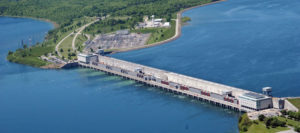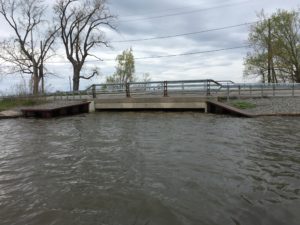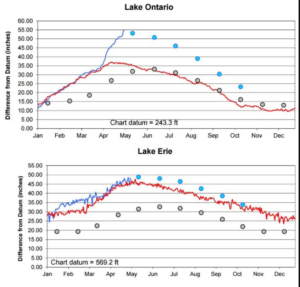 Flooding appears to have peaked in the Montreal area, and the international panel that controls the Moses-Saunders Dam on the St. Lawrence River is preparing to release more water in order to help the record-high level of Lake Ontario.
Flooding appears to have peaked in the Montreal area, and the international panel that controls the Moses-Saunders Dam on the St. Lawrence River is preparing to release more water in order to help the record-high level of Lake Ontario.
That’s the good news. The bad news is that it won’t make a noticeable difference to lakeshore property owners for a long time.
The CBC and the Montreal Gazette say the water has peaked in Montreal and surrounding communities, where neighborhoods along the river had to be evacuated and thousands of homes are flooded. The Gazette quotes the Canadian secretary for the International Lake Ontario-St. Lawrence River Board saying as the St. Lawrence and Lac St. Louis in Montreal begin to go down, they’re preparing to raise gates on the dam to help Lake Ontario. Their policy is to try and keep the St. Lawrence just at flood stage While helping Lake Ontario all they can.
 They have to walk a narrow line. The International Joint Commission says for every inch of water Lake Ontario goes down, the St. Lawrence rises by 11 inches at Montreal. Any additional water they can release will be incremental.
They have to walk a narrow line. The International Joint Commission says for every inch of water Lake Ontario goes down, the St. Lawrence rises by 11 inches at Montreal. Any additional water they can release will be incremental.
Lake Ontario at Rochester measured at 248.41 feet this morning, essentially unchanged from yesterday. The average for the entire lake is 248.46 above sea level. The U.S. Army Corps of Engineers says that breaks the previous record of 248.2 set in the flood year of 1973.
A spokesman says the Lake Ontario basin has had unbelievable amounts of rain, targeting the lake like a bullseye.
Their graph shows how much faster Lake Ontario has risen than Lake Erie:
